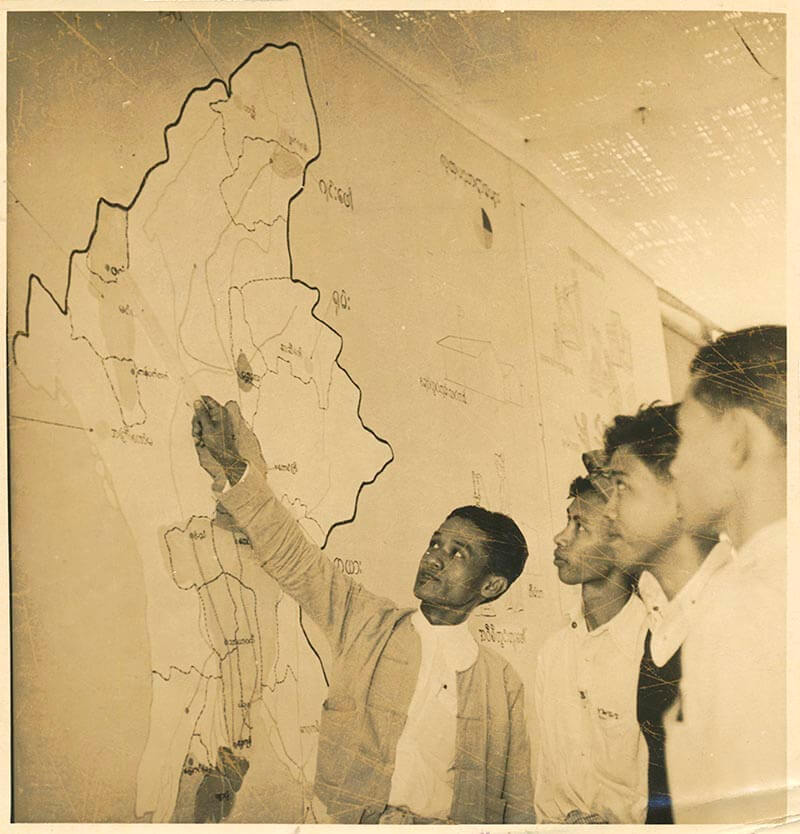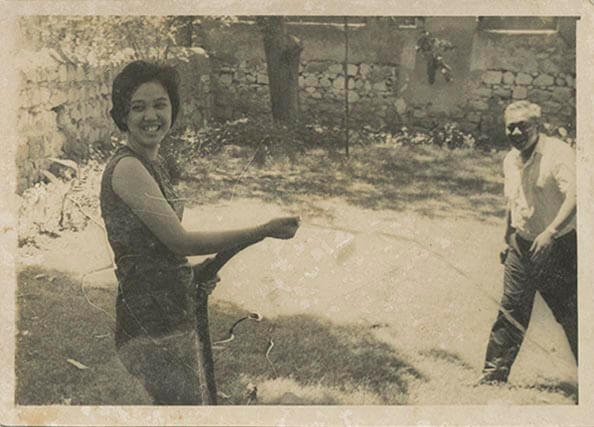about
By 1886, the British East India Company had expanded to include most of Burma, annexing it to India. Burma later became a separate colony in 1937 until 1942, when it fell under Japanese occupation. This 60 year period saw the opening of many photographic studios throughout major cities and formed the start of local photographic culture by professionals as well as in private homes. The Japanese surrendered in 1945 and Burma became independent in 1948. The colonial “exoticism” photography with the usage of painted jungle backdrops and posing Burmese in traditional dress changed swiftly following independence. Professional portrait studios were in very high demand in the 1950s and 60s for sittings of a wide spectrum of Myanmar’s society. In 1962, left-wing general Ne Win staged a coup, banned political opposition, suspended the constitution, and introduced the “Burmese way of socialism.” The change of government and political agenda forced foreigners out of the country. This also affected photography as most of the studios until the 1950s where run by Europeans or, more often, Indians. The rapid decline of Indian-runstudios made room for many Chinese photographers to take over the industry. Restrictions for photography, especially journalistic ones, also factored in the history of recorded images in Myanmar.
The Myanmar Photo Archive is a physical archive of photographic materials from Myanmar. The materials range from studio portraiture, private photo albums, official photography, company records, scientific research photography, documentary images as well as studio accessories, slides and negatives. The archive aims to create a comprehensive record of photographic materials and culture and provide historic context to the materials within the archive. Currently, the earliest images are from 1890 and range until the present decade.
There is great urgency in collecting the rapidly disappearing original materials as well as trying to understand photographic culture from those practitioners who remain to tell the stories of their work before digital times.
MPA is only at its starting point in the exploration of the many different areas of photography, collecting professional records as well as private photography. The MPA website provides an insight into photographic history in Myanmar and publishers regularly featured articles on visual culture.
MPA is a private endeavour initiated by Austrian artist Lukas Birk. He previously worked on archiving the history of box camera photography in Afghanistan (Afghan Box Camera Project) and founded arts programs in China and Indonesia (SewonArtSpace / ASAP).
For more information please contact us here

